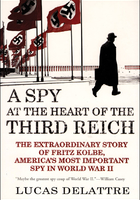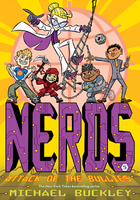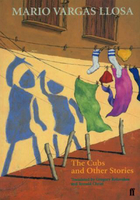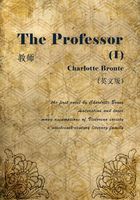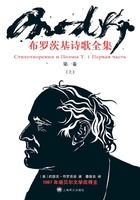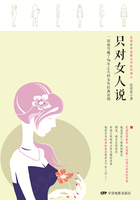We all know a thing or two about points. After all, we refer to points all the time:
“Get to your point!”
“What's your point?”
“Please stick to your point.”
Yet all too often, people confuse a point with something else: a theme, a topic, a title, a catchphrase, an idea. We believe a good speech can simply be about supply-side economics, the benefits of athleticism, the role of stepmothers, or the summer you spent in Costa Rica.
But none of these are actual points.
Imagine a child's history paper on the American Revolution. If you asked him for his point, he might say it's about the American Revolution.
That's a topic.
He might also say it's about George Washington and the Founding of America.
That's a title.
He might even say it's about the role of perseverance in American history.
That's a theme.
But a point is unique.
A point is a contention you can propose, argue, defend, illustrate, and prove.
A point makes clear its value and its purpose.
And to maximize impact, a point should be sold, not just shared or described.
So what does a true point look like? It should look something like this:
A politician's point: “My plan will expand home-buying opportunities for the middle class.”
A CEO's point: “This investment in R&D will ensure our company continues to stay relevant.”
A vendor's point: “My unique services will make you more profitable.”
An advocate's point: “This movement will save lives.”
A job interviewee's point: “I will help your department accomplish its goals.”
A mother's point: “Saving that money now means you'll be able to buy something even bigger later.”
A surefire way to know if you have a real point—and successfully create one—is to apply a simple three-step test, followed by two bonus “point-enhancers”:
Step One: The “I Believe That” Test
Step Two: The “So What” Test
Step Three: The “Why” Test
Enhancement One: Avoiding Split Ends
Enhancement Two: Adding a Value Proposition
These steps are the bread-and-butter of this book, so you may want to find your highlighter and take breaks to apply these recommendations to your own points and subpoints. The best way to learn these tips is to apply them right away.
Step One: The “I Believe That” Test
This is a pass/fail test, and it boils down to this:
Can your point fit into this phrase to form a complete sentence?
“I believe that ___________________________.”
For example, you can't say, “I believe that the American Revolution.” Or “I believe that George Washington and the Founding of America.” Or even “I believe that the role of perseverance in American history.” These are fragments, not complete sentences, and your fifth-grade English teacher would not be happy.
But you can say, “I believe the American Revolution gave our country an enduring democratic identity.”
Some more grown-up examples:
You can't say, “I believe that innovations in IT.”
But you can say, “I believe that innovations in IT will make us more efficient.”
You can't say, “I believe income inequality.”
But you can say, “I believe income inequality is America's biggest domestic challenge.”
You can't say, “I believe that investing in infrastructure.”
But you can say, “I believe that investing in infrastructure is the best way to prepare for our future.”
Try this test right now with a point you occasionally make or might make to your colleagues, boss, or potential clients. Then see if what you thought was your point was really something else.
Once your point passes the “I Believe That” Test, move on to Step Two. If it's not quite there yet, keep working at it until your “I believe that” is grammatically sound. If you need inspiration, read some of the “I Believe” statements that separate the chapters in this book.
Step Two: The “So What” Test
The “So What” Test roots out points that pass the “I Believe That” test but may be too shallow to serve as the foundation of a meaningful presentation. These weak points are often truisms. A truism, by definition, is inarguably true, so there's no use proposing one, whether your point is that “world peace is a good thing” or “ice cream is delicious.”
You might also call this the “duh” test.
You can tell if your point is too shallow or a truism by asking two questions: “Is there a reasonable counterpoint?” and “Can I spend more than a minute defending this point?”
More point-focused versions of those earlier examples could be “Ice cream is always a better dessert than frozen yogurt” and “The United Nations is critical to preserving world peace.”
These are points that can be argued with support from logic, data, or case studies.
Being able to distinguish between a shallow argument and a substantive one is crucial to making a meaningful point.
Now let's put Steps One and Two together.
Example One:
“The 2016 Election” = Not a point
(Flunks the “I Believe That” Test)
“The 2016 Election was a huge news event.” = Not a point
(Passes the “I Believe That” Test, but it's too shallow—there's no counterpoint.)
“The 2016 Election changed the conventional rules of running for President.” = A point!
(Passes the “I Believe That” Test and requires analysis to make the case)
Example Two:
“Facebook's new privacy features” = Not a point
(Flunks the “I Believe That” Test)
“Facebook has new privacy features.” = Not a point
(Passes the “I Believe That” Test, but it's clearly true.)
“Facebook's new privacy features substantially protect their users.” = A point!
(Passes the “I Believe That” Test, and it's something worth contending.)
Almost every professional communication—and even most personal ones—can be improved by highlighting a point. A student once challenged me on this by suggesting that the person who introduces speakers or simply welcomes an audience doesn't have a point.
Indeed, “Introducing Samantha Speaker” isn't a point.
But “Samantha Speaker's ideas will help us become more effective project managers” certainly is.
“Hello and welcome!” isn't a point.
But “The learnings from this conference will make your Human Resources processes more efficient” certainly is.
By this time, you probably have a usable and substantive point—imagine it as the tip of a #2 pencil. But ask yourself this: is it the sharpest point possible? The answer to that will come from Step Three.
Step Three: The “Why” Test
The “Why” Test is crucial to ensure you're not using meaningless adjectives—what I call “badjectives.” These are generic adjectives that only add dead weight to your point.
Compare these two columns of adjectives:
Column 1
Column 2
Excellent
Urgent
Great
Profitable
Wonderful
Efficient
Amazing
Unprecedented
Very Good
Galvanizing
The adjectives on the left are nearly worthless in comparison to the ones on the right. When we say something is “great” or “very good,” there's little indication of scale, reason, or specific meaning. Yet speeches and written reports—and more than a few Tweets—are often loaded with badjectives.
If you're using badjectives, or have a suspicion you are, start the correction by saying your fully realized point aloud.
Next, ask yourself: “Why?” and answer that question.
Example One:
I believe hiring a social media manager is important.
(Why?)
Because she can help us build positive buzz around our product.
Now eliminate the badjective “important,” and connect the first part (“I believe hiring a social media manager . . . ”) directly to the last part (“ . . . can help us build positive buzz around our product.”):
I believe a social media manager can build critical buzz around our product.
Example Two:
I believe our marketing strategy is weak.
(Why?)
Because it focuses too much on product benefits and not enough on customer needs.
Like in the previous example, connect the first part directly to the last part, eliminating the badjective “weak”:
I believe our marketing strategy focuses too much on product benefits and not enough on customer needs.
Audit your presentation materials constantly to root out badjectives and replace them with more meaningful adjectives.
Better yet, don't use an adjective at all and make the point through example.
For example:
Not Good:
“Adopting this protocol will be great for our company.”
Good:
“Adopting this protocol will be very productive for our company.”
Better:
“Adopting this protocol will allow our operations to run more efficiently.”
All points, but which makes the strongest case to you?
Using badjectives is like when a Little League coach says “Come on now, Johnnie!” versus “Keep your eye on the ball as it comes to you, Johnnie!” One has little-to-no value, whereas the other makes a useful point.
Remember: You don't want to be your point's cheerleader; you want to be its champion.
Enhancement One: Avoiding Split Ends
Often, a speaker will sneak two or more points into one using “split ends”:
I believe moving our files to the cloud will (1) improve our carbon footprint and (2) make us more efficient.
If your point suffers from split ends, no shampoo will help. Whatever you gain by squeezing in multiple ideas, you lose twice over by diluting the impact of each. The audience is not only forced to divide its attention among multiple points but is also given no direction as to which idea is most relevant.
In most cases, you can spot the strongest one based on your organization's mission and your audience's highest interests.
In this case, “make us more efficient” is likely stronger than “improve our carbon footprint” because “efficient” speaks to cost savings, higher productivity, and higher profits, whereas “carbon footprint” connects mostly to specific environmental concerns. (Of course, if you're at an environmental conference, flip that priority.)
Whatever specific idea you choose, know that removing a detail from your point doesn't mean it must be banished from your presentation. There's always room in a presentation to include multiple elements as “added benefits” or “extra considerations,” but the key is to avoid details and words that detract from your main point.
Enhancement Two: Adding a Value Proposition
In many cases, you can enhance your point by incorporating the highest value proposition. What's the greatest impact your idea will effect? It may be a way to cut costs, a way to help low-income children succeed in school, a way to sell more toasters, or a way to save lives, but your audience—not just you—must recognize it as a substantive benefit.
Compare these points, which pass Steps One and Two:
(I believe) this measure will enable us to make smarter financial decisions.
(I believe) my educational proposal will raise student test scores.
(I believe) this approach will improve our marketing effectiveness.
(I believe) this innovation will optimize hospital operations.
to these:
(I believe) this measure will dramatically cut our costs.
(I believe) my proposal will help low-income children succeed in school.
(I believe) this approach will enable us to sell more toasters.
(I believe) this innovation will save more lives.
In too many communications, declarations don't go as far as they can to achieve full impact. If your idea can save lives, protect the peace, or make tons of money, why not use those magic words to sell your point? Push yourself beyond positive metrics and short-term benefits to sell the ultimate goal—the stuff of your hopes and dreams, not of your To Do lists and status reports. This will truly activate your audience.
Don't Get Attached to the Words
Last tip: Don't get too attached to the words. Some point-makers—especially writers and lawyers—write a “perfect point” and then treat it like gospel or a set-in-concrete mission statement. This tactic comes with some peril: if you forget some of those precise words midway through your point, your presentation may go off the rails because you didn't give yourself room to improvise. Your true goal as a communicator is to convey your point, not a precise arrangement of words, so feel free to use your vocabulary flexibly—just be sure your point remains concise.
Now let's put all of these ideas together in two real-world examples:
Example 1: NPR Pledge Drive
If you listen to NPR regularly, you may dread the pledge drives—extended periods when they often steal airtime to ask for donations. It's annoying and repetitive, but necessary to meet their financial goals. Below is an evolution of that donation point from a relatively flat point to its most powerful incarnation, and the prompts that take it there.
You should donate to public radio.
(Why should I?)
Donating to public radio is important.
(Why is it important?)
Donating to public radio supports quality programming.
(Which does what?)
Donating to public radio helps expose vital truths.
(Where do I send the check?)
There's a dramatic difference in impact between “You should donate to public radio” and “Donating to public radio helps expose vital truths.” The point immediately elevates from a generic plea to an urgent proposal. That's the power of the point.
Example 2: Taylor vs. Denzel
If you want to see clear consequences of knowing and not knowing your points, check out these award acceptance speeches from two of our biggest entertainment superstars. (They're easy to find and watch on YouTube).
Start with the end of Taylor Swift's February 15, 2016 speech accepting the Grammy Award for Album of the Year. It went like this:
As the first woman to win Album of the Year at the Grammys twice, I want to say to all the young women out there: There are going to be people along the way who will try to undercut your success, or take credit for your accomplishments, or your fame. But if you just focus on the work and you don't let those people sidetrack you, someday when you get where you're going, you'll look around and you will know that it was you and the people who love you who put you there, and that will be the greatest feeling in the world. Thank you for this moment.
Nailed it. A clear and singular “I believe that.” A clear value presentation. No rambling—she got in and out efficiently. I'm not sure if Taylor memorized that speech or not, but she clearly knew the point she wanted to make, and made it effectively.
Now compare that speech to one by Denzel Washington accepting the prestigious Cecil B. DeMille Award at the 2016 Golden Globe Awards in January 2016, which went like this:
Thank you. I lost my speech. Thank you. All right. Sit down. That's good. Thank you. Thank you. I'm missing one. Our Malcolm, filmmaker, he's working on his thesis at AFI. Yeah, he will give you a job one day after me. Yeah, you really do forget everything you're supposed to do. I'm speechless. I just thank you. I thank the Hollywood Foreign Press. Freddie Fields, who first—some of you may know Freddie Fields. He invited me to the first Hollywood Foreign Press luncheon. He said, “They're going to watch the movie. We're going to feed them. They're going to come over. You're going to take pictures with everybody. You're going to hold the magazines, take the pictures, and you're going to win the award.” I won that year. I want to thank the Hollywood Foreign Press for supporting me over the years, and they've always made me feel like a friend or part of the party. . . . [After thanking a handful of people] Huh? Yeah, I do need my glasses. You were right. Come here. Who else is on the list? Oh, well, anyway. Man, that's all right. Anyway, God bless you all. I didn't thank the family? Thank the family, and God bless you all. Thank you.
It's obvious who gave the stronger speech, but what made Taylor's more engaging than Denzel's wasn't a matter of charm, confidence, humor, practice, or even content. It was about having a point, knowing the point, and delivering the point.
No offense to Denzel—one of our greatest living actors and I'm sure a wonderful human being—but if you gave a speech like his in a professional setting, you'd likely never be allowed to speak in public again.
The bottom line is this: The only way to deliver the full value of an idea is by making a true point. And like a quality steak knife, the sharper it is, the more penetrating it will be.
I believe that good journalism, good television, can make our world a better place.
—Christiane Amanpour

